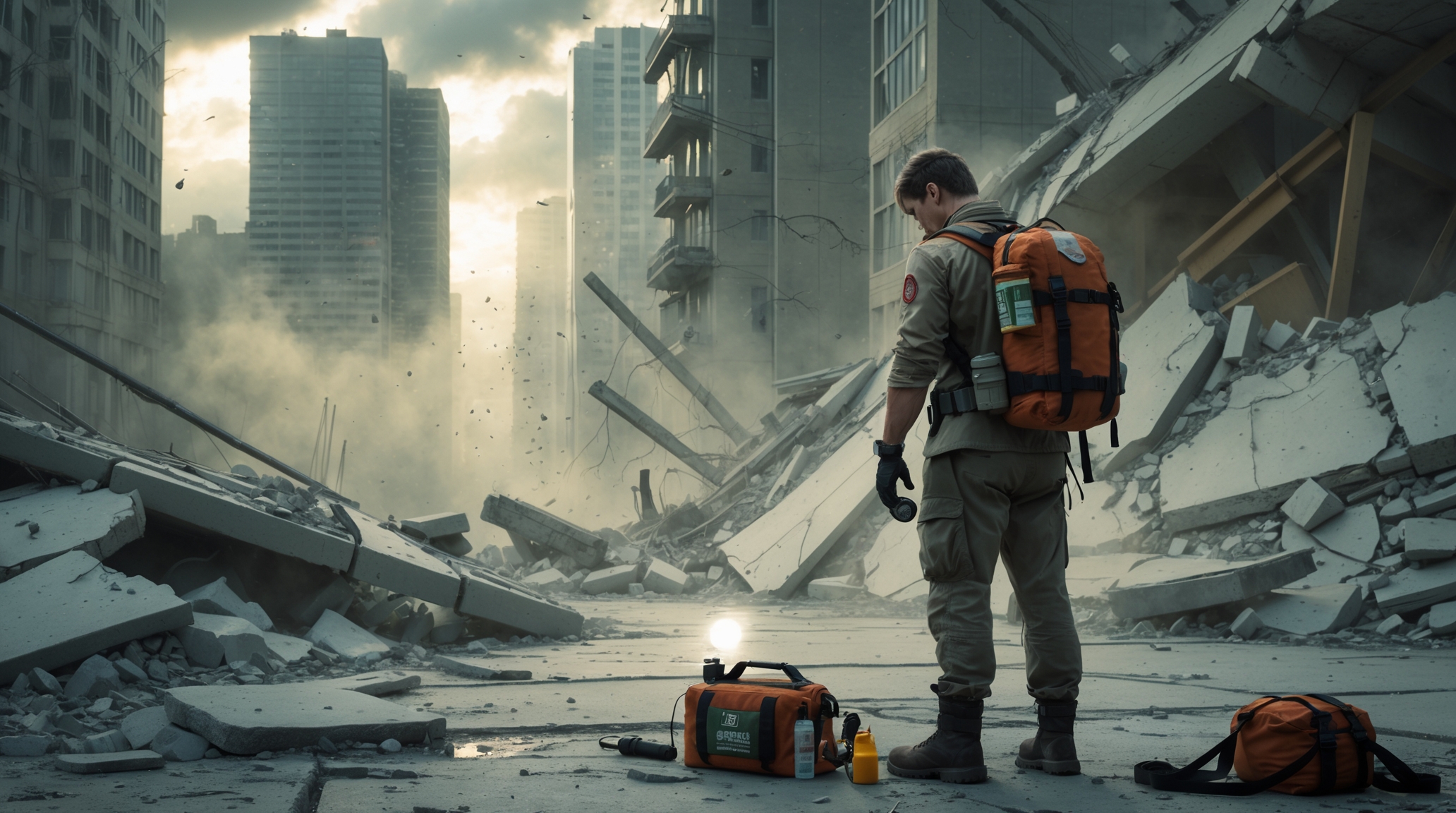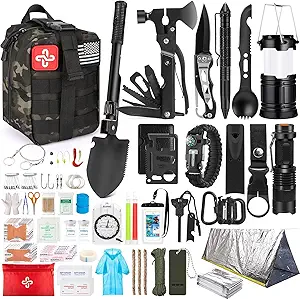Navigating Natural Disasters: A Survivalist’s Guide to Earthquake Preparedness

Navigating Natural Disasters: A Survivalist’s Guide to Earthquake Preparedness
Understanding Earthquake Risks
The Basics of Earthquake Preparedness
Earthquakes, unpredictable and powerful, remind us of the volatile nature of the earth beneath our feet. Preparing for an earthquake involves understanding these risks, which vary by geographical location. Assess your immediate environment for potential hazards, such as:
- Loose objects that could fall
- Heavy furniture that might tip over
This assessment forms the foundation of your preparedness strategy, guiding you on how to mitigate these risks effectively.
Common Challenges with Earthquake Preparedness
One of the biggest challenges in earthquake preparedness is complacency. Many assume that if they haven’t experienced an earthquake yet, they won’t in the future. This mindset can lead to a lack of preparedness. Overcoming this challenge involves education and awareness, highlighting the importance of readiness regardless of past experiences. Implementing earthquake drills and securing household items can turn preparedness into a routine part of life.
Key Factors to Consider
Creating Your Earthquake Emergency Plan
An effective earthquake emergency plan addresses multiple aspects of safety and preparedness. It includes:
- Identifying safe spots in your home
- Planning evacuation routes
- Establishing a communication plan with family members
The goal is to ensure that everyone knows what to do, where to go, and how to communicate during and after an earthquake.
Assembling Your Earthquake Survival Kit
Your earthquake survival kit should be tailored to meet the specific needs of your household, including pets. Essentials include:
- Water
- Non-perishable food
- First-aid supplies
- Flashlights
- Batteries
- Important documents
Remember, the aftermath of an earthquake can leave communities isolated, so your kit should be equipped to sustain you for at least 72 hours.
Preparing Your Home and Family
Securing Your Home
Securing your home against earthquakes involves both identifying potential hazards and mitigating them. Steps include:
- Fastening heavy furniture to walls
- Securing appliances
- Installing latches on cabinets
These simple steps can significantly reduce the risk of injury and damage during an earthquake.
Educating and Practicing with Your Family
Awareness and practice are crucial components of earthquake preparedness. Educating your family about what to do during an earthquake and conducting regular drills ensures that everyone is prepared. Discussing the signs of an earthquake and practicing ‘Drop, Cover, and Hold On’ can make a significant difference in response time and safety during an actual event.
Enhancing Structural Safety
Enhancing the structural safety of your home is crucial. This involves taking steps to ensure that your house can withstand the tremors of an earthquake to the best of its ability. Retrofitting older homes can significantly increase their resilience by strengthening the foundation and improving the structure’s overall stability. This process may include:
- Bolting the house to its foundation
- Reinforcing walls, especially cripple walls with plywood
Securing Water Heaters and Gas Lines
Water heaters should be strapped to wall studs to prevent tipping and rupturing. Similarly, flexible connectors should replace rigid gas lines to appliances to reduce the risk of gas leaks during an earthquake. These steps are relatively simple yet vital for enhancing your home’s safety.
Evaluating Roof and Chimney Stability
Don’t overlook the stability of your roof and chimney. A damaged roof or chimney can be a significant hazard during an earthquake. It’s advisable to have these structures inspected by professionals who can assess their condition and recommend necessary repairs or reinforcements.
Community and Neighborhood Preparedness
Individual preparedness is crucial, but community and neighborhood readiness can significantly enhance safety and recovery efforts following an earthquake. Creating a support system within your neighborhood can be invaluable. This includes knowing who has medical or emergency response training and organizing neighborhood safety meetings to discuss plans and share resources. Engage with local emergency services to understand their plans for responding to earthquakes and participate in community emergency response team (CERT) training.
Advanced Safety Measures and Considerations
Beyond basic preparedness and securing your home, there are advanced measures you can take to further protect yourself and your loved ones. These include:
- Installing seismic shut-off valves
- Investing in earthquake insurance
- Preparing for post-earthquake scenarios
Enhancing Mental Preparedness for Earthquakes
Cultivating a Mindset of Resilience
In the realm of earthquake preparedness, mental readiness is as crucial as having a well-stocked survival kit. Cultivating a mindset of resilience involves understanding the psychological impact of natural disasters and preparing oneself to face uncertainty with courage. Encourage family discussions about fears and concerns to fortify emotional resilience.
Stress Management Techniques
Practicing stress management techniques, such as deep breathing exercises or mindfulness meditation, can be life-saving. Integrate these practices into your earthquake drills to help family members remain calm and focused during actual events.
Advanced Communication Strategies
Establishing Redundant Communication Systems
In the aftermath of an earthquake, conventional communication networks may fail. Establishing redundant communication systems, such as satellite phones or two-way radios, ensures that you can stay in touch with family and emergency services. Educate your family on using these devices and include them in your emergency plan.
Utilizing Social Media and Technology
Social media and technology have emerged as vital tools in disaster response. Platforms like Facebook’s Safety Check can quickly inform friends and family of your safety. Additionally, apps designed for disaster preparedness can provide real-time updates, emergency notifications, and valuable resources.
Putting It All Together
Comprehensive Review and Continuous Improvement
As you finalize your earthquake preparedness plan, conduct a comprehensive review of all elements. Ensure that your survival kit is updated, your home is secured, and your family is educated and practiced in emergency procedures. Regularly revisit and revise your plan to incorporate new insights, technologies, and changes in your living situation.
Action Steps for Future Readiness
To stay ahead in earthquake preparedness, engage actively with your community’s emergency management efforts. Participate in local drills, volunteer for community response teams, and stay informed about the latest in earthquake science and safety measures.
Compare Products
Use the arrows to choose products to compare.
| Feature / Product | Survival 250Pcs | Furniture Straps |
|---|---|---|
 |
 |
|
| $38.19 | $26.89 | |
| Shop now → | Shop now → | |
| Specifications | ||
| Brand | HIHEGD | N/A |
| Weight | 4.5 Pounds | 270 g |
| Dimensions | 8.9 x 6.8 x 5.9 inches | 16.3 x 11.7 x 3.9 cm; 270 Grams |
| Material | Aluminum, Nylon, Plastic | Metal |
| Capacity | N/A | N/A |
| Efficiency | N/A | N/A |
| Waterproof | N/A | N/A |
